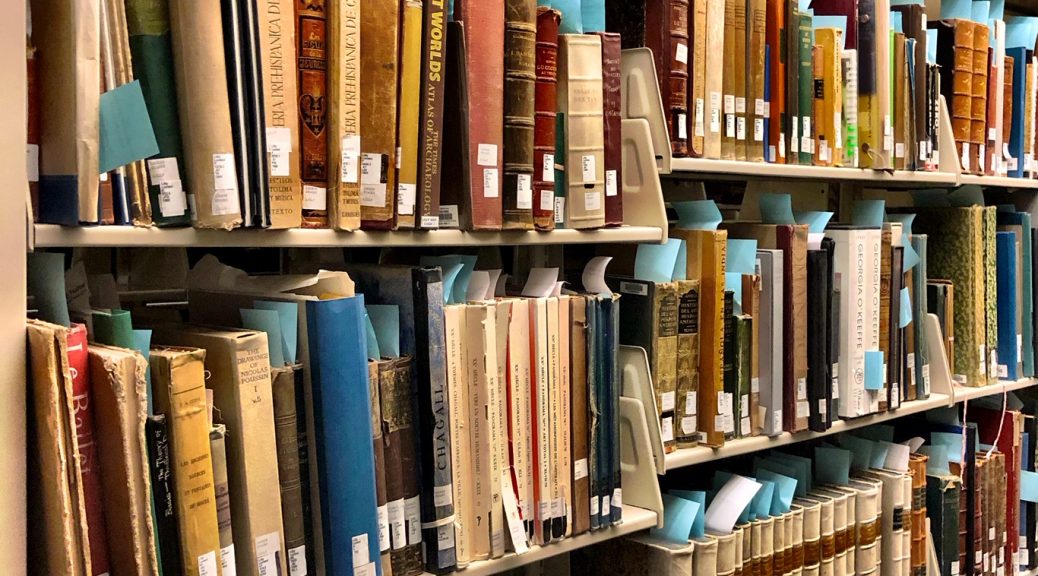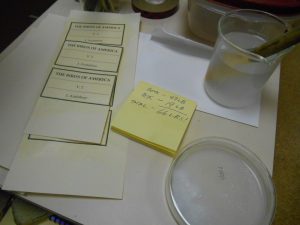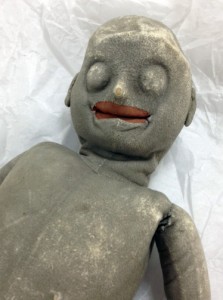Here at Duke University Libraries, we’re fortunate to have a stunning collection of artist books from all over the world. Just like a regular book, artist books can come in a range of shapes and sizes. Some, however, come in more unusual shapes than most, which in turn can pose some interesting conservation questions.
One such book is the “Oubey: Mindkiss” book.
The Art
As you’ve probably noticed, this is not simply a book. “Oubey: Mindkiss” is made up of a sculptural slipcase containing five separate books.
Each book is devoted to the work of t late artist Oubey and is organized by the medium of the work or the time period the work was made.
The piece is clearly a work of art in itself. This is all the more evident by the fact that it has won multiple awards for its design. However, there are features of this item that have to be addressed from the view of a conservator, rather than one of an artist.
The Concerns
For one, the sculptural top of the slipcase consists of shapes and edges that are noticeably sharp. Pair that with the hard plastic material it’s made of, and you have an item that is bound to do some damage.
I am mostly referring to the damage the slipcase would do to any object placed beside it, but honestly this slipcase could probably hurt your hands as well if not handled carefully.

If this item were to sit as is on a shelf next to other items as normal, there is no way the stiff plastic edges wouldn’t eventually catch, snag, or tear the item beside it.
Another common problem with slipcases is how easily the books within them can fall out. These books are no exception due to the slippery, metallic material they are covered with. That combined with the equally slippery plastic case means the books have an especially high risk of sliding around.
Additionally, the plastic of the slipcase might be doing damage to the books inside of it over time. Although the books are still reflective and metallic (I provided proof in the following photo), if you look at the covers more closely you can see many horizontal scratch marks across the surface of each cover.

This observation is more of an assumption than a proven fact, but my guess is that these scratch marks are the result of the repetitive in and out motion of the books when they are removed or inserted in to the slipcase. The books fit rather snugly into the case, so they could be rubbing up against the inside whenever they move.
So, what can a conservation specialist do?
The Conclusion
Unfortunately, I can’t fix the issue regarding the covers of the books. Even if I knew how of a way treat metallic coatings (which I certainly don’t), something would still have to be done about the material of the slipcase rubbing up against the covers in the first place. An extreme solution would be to refrain from taking the books out of the slipcase at all, but then future readers would lose access to a significant portion of the information this item has to offer.
On a more positive note, something can be done about the nature of the slipcase. Luckily that solution is simple. We just make a box for it.
Does it feel a bit like hiding away a piece of art? Sure. However, as a library, one of our priorities is maintaining our collections while providing access to them. Making a box will protect our collections while also insuring that “Oubey: Mindkiss” is safer to handle for future patrons. And that’s a win for everyone.




















































